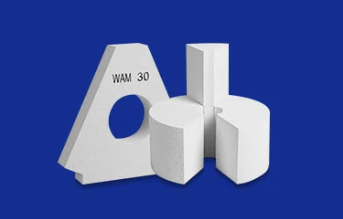The Best Solution For Energy Saving And Reducing CO2 Emission
The Best Solution For Energy Saving And Reducing CO2 Emission
 Tel: +86-532-85717690/85717352/85832089
Tel: +86-532-85717690/85717352/85832089 E-mail: wam@wamcn.net
E-mail: wam@wamcn.net
In a furnace, the insulation layer is what keeps heat inside and out. The goal of the insulation is to help keep the furnace from getting too hot or too cold. When your furnace becomes very hot, it can be dangerous if you are not prepared for it.
The most common problem with furnaces is that they go into a "burst" of refractory brick where there's no airflow through them because they are stuck together.
This can be very dangerous because gases build up in the space between refractory bricks, which can cause an explosion if something catches fire. Insulating fire bricks can help to prevent this from happening. However, we have some tips below on how you can avoid such an occurrence.
If your furnace's layer is not properly insulated and compacted, it will not perform as expected. The result could be a burst of refractory brick that can damage your home and potentially cause a fire.
If you are planning on installing insulating fire bricks in the attic or walls of your home, it's important to make sure that this step has been completed before installing any overtop of the finished product (the exterior).
Once the insulating fire bricks have been installed, they need to be properly attached for them to all work together effectively without creating gaps between them.
Gaps in-between could create channels where air could pass through easily into other areas where heat escapes from and cause other problems later downstream if left unchecked long enough.
The insulation brick must be bonded to the furnace. If it is not, you can damage the furnace by heating it too much and causing a burst of refractory mortar.
If your insulation brick has fallen out of place or been damaged in any way, make sure that you replace it as soon as possible. This will avoid damage to both your furnace and its components such as thermocouples or thermometers.

Cracks in the refractory brick can cause a burst. If the heat source is below freezing, the refractory will freeze and expand. This can crack the brick or expand its pores so that it becomes unstable. Cracks can also be caused by thermal expansion and contraction due to rapid temperature changes.
In addition to these issues, if there are cracks in your bricks at ground level, they will not be able to withstand fire exposure for long periods because oxygen gets into them easily through these holes.
Another thing to consider is the amount of ventilation. If you have a large open space, then this will be an easy task for you. But if your furnace is in some sort of enclosed area like your basement or attic, then it’s going to be more difficult to get good airflow through the house.
Make sure that there are enough openings around your home so that smoke can escape and fresh air can enter. Use a ducting system that allows for proper airflow while keeping out harmful fumes from entering other parts of your home.
We have years of experience in the industry and are confident that we can offer you a good product.
Our range of products includes fire brick for use in your chimney or flue linings, as well as insulating bricks for external walls and internal flooring applications.
Our insulating fire bricks are made with high-quality materials. To place an order or for information, kindly click here.